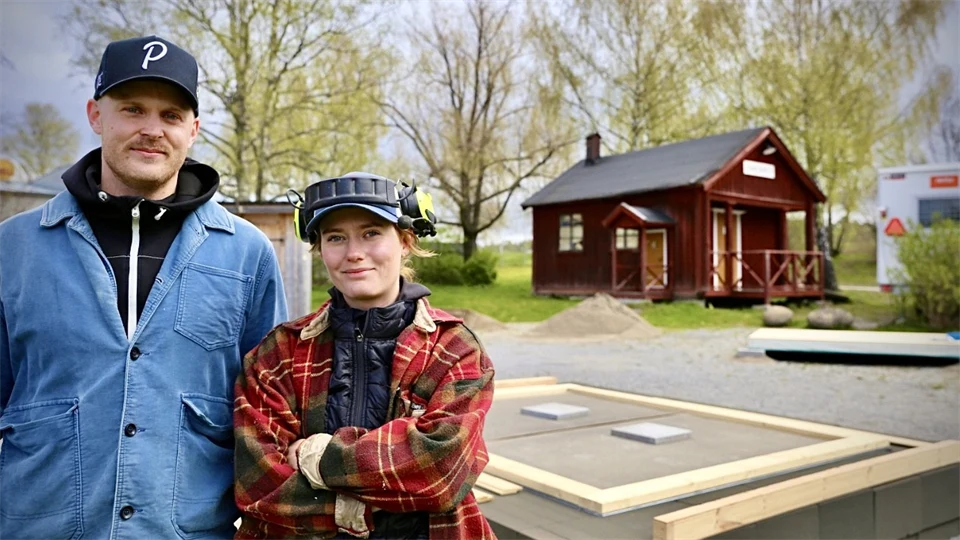The ice melts, but the knowledge remains when students compete in sustainable construction
How do you build a house that keeps the cold – in the middle of the summer heat? Engineering students from all over the country are trying to find out in the spectacular Ice Box Challenge. Mid Sweden University's team hopes that smart solutions and local materials will give them an advantage.
Behind the large carousel on Jamtli Square, two small house foundations have been built and are now waiting for buildings. Before the day is over, the houses and ice blocks must be in place. The Ice Box Challenge is about building as sustainable and energy-efficient a house as possible – a house that can keep a cubic meter of ice frozen for as long as possible. Next to it is a comparison house built according to Swedish building standards. After a few weeks, the ice in both houses is weighed.
"I think we have a good chance of winning," says Jakob Wallinder, who is studying the last semester of the Construction Engineering programme in Östersund.
"We probably won't come last anyway," says his competition colleague Martina Fredin, who is in her second year as a future construction engineer.
"Our education is about sustainable construction, and this is a sustainability competition, so it suited us," Jakob adds.
Shows how energy-efficient architecture makes a difference
The competition ends on June 6, when the ice blocks will be measured. You measure how much the blocks have melted as a percentage.
Behind the Swedish competition is the Passive House Interest Group, and the competition is a practical and visual way to show how energy-efficient architecture – such as passive house principles – can make a big difference. Mid Sweden University's team has chosen to build a passive house with materials from local IsoTimber, where standing wooden studs with milled grooves create insulation.
"The air becomes stagnant and then the cold is kept longer," Martina explains.
In addition to IsoTimber, a number of local entrepreneurs have sponsored Mid Sweden University's team. This is part of the effort so that they have a chance in the competition in which five Swedish universities are participating. In addition to Mid Sweden University, teams from Linnaeus University, Luleå University of Technology, Dalarna University and KTH are participating.
During the spring market at Jamtli on 24-25 May, Jakob Wallinder, Martina Fredin and the other participants from Mid Sweden University's team will be on site to talk about the Ice Box Challenge.
Contact

